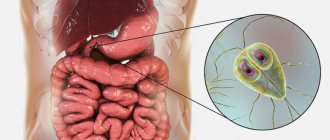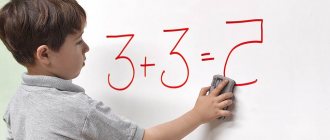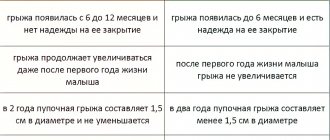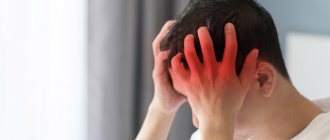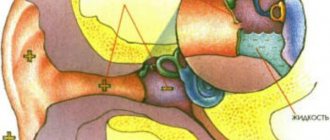Epilepsy is a chronic disease that causes convulsive and non-convulsive seizures. Most often, children and the elderly suffer from this disease. Modern medicine and regular studies of patients with epilepsy have made it possible to determine a plan for the treatment and prevention of this disease at a fairly high level.
Children's neuro-rehabilitation center offers the services of highly qualified epileptologists who specialize in the diagnosis and treatment of this pathology. Call us to make an appointment or clarify the information you are interested in about our specialists and treatment methods.
Opening hours: 8:00 to 20:00
Telephone
Sign up
Causes of the disease
Possible causes of epilepsy include the following:
- genetic predisposition inherited from parents;
- infectious diseases of the brain;
- traumatic brain injuries;
- viral diseases affecting the brain;
- Down syndrome;
- congenital defects of brain structure;
- chronic diseases of the central nervous system.
The causes of the disease are determined during an examination of the body. Each case is individual and requires a professional approach. Manifestations of the disease can be varied, so it is necessary to take into account any deviations from the norm of the child’s behavior, viral diseases he has suffered, and hereditary factors.
Treatment and prevention of epilepsy
Primary prevention of epilepsy comes down to avoiding its external causes: craniocerebral herbs, infections, poisoning, including alcohol or drugs, careful management during childbirth, avoiding hypoxia and birth trauma, timely reduction of body temperature to avoid febrile convulsions.
Correctly selected therapy in most cases reduces the frequency and severity of attacks if anticonvulsants are taken systematically and carefully. A prolonged convulsive attack can be stopped with injections, for example, diazepam, relanium. Continuous treatment is prescribed by a neurologist with drugs from the group of anticonvulsants: carbamazepine, topiramate, valproate. To increase treatment adherence, long-acting forms of drugs are used. The dose is controlled by the doctor depending on the patient's condition (start of treatment, fever, kidney disease). It is impossible to select and purchase them yourself without a prescription.
In cases of development of encephalopathies, mental equivalents of convulsive seizures and epileptic personality changes, therapy is supplemented by a psychiatrist. If conservative treatment does not help, neurosurgery is sometimes resorted to.
How to determine epilepsy in a child
The most common and recognizable symptom is seizures accompanied by loss of consciousness. It is worth noting that this symptom is characteristic of a severe form of the disease.
The dangerous thing about the disease is the fact that the attack occurs suddenly and unpredictably. Often patients are forced to carry medications with them to stop an attack, otherwise death may occur.
Doctors distinguish more than 50 subtypes of epilepsy, each of which has its own characteristic features and manifestations. For a person not involved in medicine, it may be difficult to recognize this disease. Therefore, parents should carefully monitor the child’s health and promptly respond to any changes in his behavior.
In infants and one-year-old children, the disease manifests itself in the same form. You should immediately contact an epileptologist if you experience the following symptoms:
- temporary numbness of the facial muscles, and then their rapid contraction, the face for some time turns into a motionless mask;
- when feeding a baby, the space between his upper lip and nose turns blue;
- the child fixes his gaze on one point for a long time;
- The baby's limbs twitch involuntarily.
The older the child becomes, the more pronounced the symptoms of the disease. The nature of the symptoms of epilepsy at the ages of 3 and 8 years has significant differences. In addition to the above-described signs of the disease, you should pay attention to the behavior and character of the child. Children who are most likely to have epilepsy are aggressive and irritable, often restless. The child finds it difficult to study at school and is unable to build relationships with peers.
Diagnosis and treatment
The disease is treated by a pediatric epileptologist. To make a diagnosis, he will need the most complete anamnesis (medical history) of the child.
- MRI and CT scan determines the presence of structural changes in the brain, thus identifying a secondary form of epilepsy;
- EEG or electroencephalogram - detects epileptic brain activity and indicates areas of increased excitability;
- Doppler ultrasound also reveals the secondary form of the disease, showing possible abnormalities in the development of cerebral vessels that cause symptoms of epilepsy.
The cost of treating epilepsy in children depends on the type of disease and the method chosen. Epilepsy is usually treated with anticonvulsant drugs, which stop seizures and shorten their duration until they disappear completely, allowing the child to lead a normal life. The drugs are selected individually, the patient is under the supervision of specialists at all times, which reduces the risk of side effects. In addition to medications, the doctor may prescribe a special diet and recommend reducing physical activity as much as possible. In the case of secondary (symptomatic) epilepsy, the doctor will prescribe therapy aimed at treating the underlying disease, in addition to anticonvulsants.
As part of complex therapy, homeopathic treatment shows good results - the frequency of attacks decreases, the general condition stabilizes. Homeopaths use regimens tailored to the needs of the individual child.
The course of treatment lasts from 2 to 3 years, then patients undergo follow-up monitoring to avoid the return of seizures. About 40 forms of epilepsy in 75% of cases can be treated before the age of 14. However, in some cases, forms of the disease are diagnosed in which the patient is forced to take medications throughout his life.
Types and forms of epilepsy in children
Doctors around the world are studying epilepsy closely. There are extremely rare forms of manifestations and symptoms, but most often the disease is characterized by certain types and forms:
- Rolandic epilepsy. The name of the disease is due to the fact that the focus of the disease is located in the central (Rolandic) sulcus of the brain. During a seizure, the child feels tingling and numbness in the facial muscles. Speech disappears for a while and active salivation begins. At the same time, the child remains conscious. The seizure usually lasts no more than 5 minutes. Most often, children aged 3 to 13 years are affected, and the disease recedes from the onset of puberty.
- Nocturnal epilepsy. This form of the disease affects only children under 3 years of age. The disease manifests itself exclusively at night. The attack passes without pain syndromes. Epilepsy is expressed in enuresis (urinary incontinence), sleepwalking, limb cramps during sleep, and irritability develops.
- Absence form of epilepsy. The mildest type of the disease is observed in children aged 5 to 8 years. As a rule, after 8 years the disease completely disappears, rarely becoming more severe. The main symptoms of absence epilepsy: memory lapses during an attack, gaze frozen at one point, synchronous uncontrolled rotation of the head and limbs.
- Idiopathic form of epilepsy. The child has no deviations in either physical or intellectual development. With this type of disease, the patient suffers from periodic seizures with loss of consciousness, increased salivation, and interruptions in breathing. After a seizure, the child has no memory of what happened.
Types of childhood epilepsy
The following types of seizures are distinguished in children:
- Absence or non-convulsive generalized. A common type, manifests itself from birth to puberty. Difficult to detect, absence lasts 5-20 seconds. The child “switches off” from the world around him. Such attacks may be accompanied by a slight tilting of the head and trembling of the eyelids. With equal probability, after puberty they may disappear or, on the contrary, intensify.
- Absence - rolling of the eyes and trembling of the eyelids
- Infantile spasms appear at 2-3 years of age. Early in the morning after waking up, the body is not completely controlled for several seconds. The baby nods his head, straightens his legs and arms, brings them to his chest, and his torso leans forward.
- Atonic is an externally short-term fainting spell, during which the body completely relaxes and consciousness becomes darkened for a few seconds.
- Full-blown seizures with severe convulsions, loss of orientation in space.
- Night attacks that occur during sleep can be recognized by sleepwalking. As a rule, they go away by the period of growing up on their own without the necessary treatment. Symptoms of childhood epilepsy are often mild, and parents and relatives do not notice the presence of the disease for a long period. The similarity of manifestations with other diseases complicates the diagnosis and prescription of correct treatment. The average age of identification of patients is 5-18 years.
It is possible to determine with certainty whether it is possible to cure epilepsy completely in a teenager or young children or not, and how to do this, only in some of its variants. Those whose causes of development have been established in detail. More often we have to hope for positive dynamics, with the weakening of convulsions and a decrease in seizures.
Methods of treatment or correction
Methods of treatment and correction of the disease are individual in nature. However, it is mandatory to obtain the results of the following studies:
- CT and MRI of the brain;
- encephalography (EEG);
- daily EEG monitoring;
- EEG of night sleep.
The data obtained is analyzed by a neurologist and, based on them, a plan for treatment or correction of the disease is developed. Complex treatment may be required for 2-4 years. In some cases, the use of medications becomes lifelong.
In addition to taking medications, your doctor may recommend:
- follow a diet that excludes foods contraindicated for this disease;
- strict daily routine;
- visiting a psychologist.
The main task of medications is to reduce the regularity of attacks and stop the progression of the disease. It is possible to stop the development of the disease in children in 70% of cases. A complete recovery from epilepsy is achieved in 30% of cases.
Diagnosis of epilepsy
The most accurate way to diagnose epilepsy is an electroencephalogram recorded over several hours (EEG monitoring, preferably accompanied by a video recording of the attack). Epilepsy requires studying the functions of the brain, excluding other causes of convulsive syndrome: an MRI or CT scan of the brain is prescribed. Additionally, laboratory diagnostics are used.
Tests for epilepsy
In the laboratory, the presence of chromosomal abnormalities can be determined using molecular screening.
Changes in the telomeres of some chromosomes are detected, leading to limited cognitive function. For the purpose of genetic diagnosis, the following is prescribed:
- molecular screening for microdeletions/microduplications (molecular copies of a chromosome region);
- gene diagnosis of Martin-Bell or Shereshevsky-Turner syndrome.
Laboratory methods are used to diagnose TORCH infections that contribute to the development of epileptic syndrome.
To correct anticonvulsant therapy, a number of laboratory tests of the content of medications are performed:
- Levetiracetam
- Carbamazepine
- Clonazepam
- Difenin
- Phenytoin
First aid during a seizure
During an epileptic attack, it is important not to get confused and take all necessary measures to prevent injury. The child must be placed on a flat, not hard surface. To prevent your baby from choking on saliva, be sure to lay him on his side. If the mouth opens during a seizure, a handkerchief should be placed between the teeth without restricting the child's breathing.
It is strictly forbidden to forcefully open your mouth or hold your tongue. Also, you should not give medication to the patient during a seizure. The attack usually lasts no more than 5 minutes. After the seizure stops, it is necessary to check the baby’s breathing, and, if it is absent, perform artificial respiration. Be sure to wait for the child to come to his senses, do not leave him alone.
If the seizure occurred for the first time or lasted more than 5 minutes, or if the child was injured during the seizure, it is recommended to call an ambulance.
Consequences of epilepsy
Epilepsy is a chronic disease that remains with the patient throughout his life.
The risk of premature death associated with injuries from falls, drowning, thermal injuries, and status epilepticus (a long series of attacks with breathing problems) increases. In addition to the clinical symptoms, a person faces the social and psychological consequences of epilepsy. It is a highly stigmatizing disease that reduces the quality and length of life. In some countries, epilepsy is grounds for dismissal or divorce. The vital activity of patients is reduced for fear of being injured during an attack. Epilepsy prevents you from occupying certain positions and driving vehicles.
Disease prognosis
The disease can have different forms and nature. Short-term seizures do not damage brain cells, unlike long-term seizures, which can cause the death of nerve cells in the brain. Sudden loss of consciousness has a negative impact on the child's health, which can lead to injuries and accidents.
As the disease develops, the child may experience psychological problems - he may begin to fear seizures, which may result in panic attacks.
Epilepsy refers to brain diseases that begin mainly in childhood and adolescence. Domestic and foreign psychiatrists and neurologists have repeatedly written about this. This is confirmed by our observations.
The frequency of onset of epilepsy in childhood can be explained by the increased convulsive readiness of the ontogenetically immature brain, especially the incomplete development of its higher parts (lack of cortical control over autonomic functions). Therefore, even minor irritants can cause seizures in a child. Increased convulsive reactivity in children is also explained by the biochemical characteristics of their body: lability of water-salt and calcium metabolism, increased hydrophilicity of tissues. The clinical picture of epilepsy is a complex set of symptoms in which mental changes are closely intertwined with neurological and somatic ones.
Manifestations of epileptic disease are expressed both in the form of individual attacks and in peculiar, more or less persistent psychopathological and neurological disorders observed in the post- and interictal period.
The central place in the clinical picture of epilepsy is occupied by epileptic paroxysms, manifested in different forms: grand mal seizure, petit mal seizures, mental paroxysms. Each of these forms of epileptic paroxysms can appear in a variety of variants.
Clinical manifestations of an epileptic attack depend on: 1) the localization of pathogenic and epileptogenic foci, since different parts of the brain have different chemical structures and unequal degrees of excitability; 2) strength and intensity of neuron discharge; 3) the extensiveness of the excitation wave developing after the nervous discharge.
When the starting point of epileptogenic excitation is localized in the motor analyzer, the strength of the nerve discharge is especially great. A low threshold of excitability is also characteristic of the temporal regions of the brain (mediobasal structures).
The types of epileptic paroxysms observed in mature patients and children are presented in the classification adopted by the International League Against Epilepsy. In the USSR they use the same classification, slightly modified by P. M. Sarajishvili. This classification identifies two large groups of epileptic seizures: a) generalized and b) focal (focal).
In children and adolescents, as in mature patients, both generalized and focal epileptic seizures can be observed. Paroxysmal states also manifest themselves in children in a variety of motor, sensory, vegetative-visceral and psychopathological symptoms and syndromes.
Generalized seizures occur in patients of different ages, but the clinical manifestations of seizures change more or less sharply depending on the age of the patient - on the ontogenetic stage of brain development. In school-age children, paroxysmal conditions differ little from the conditions observed in adults. In early and preschool age, the clinical picture of paroxysms has a number of features characteristic of this phase of development.
Generalized seizures include grand mal seizure, petit mal seizure, myoclonic and akinetic seizures, and status epilepticus.
With a grand mal seizure, involuntary tonic and clonic contractions of the body muscles and loss of consciousness occur. But in children of early and preschool age the tonic phase predominates; clonic manifestations are rudimentary and sometimes absent altogether. Characteristic of a seizure at this age are pronounced respiratory distress and cyanosis. Often in young children, generalized convulsions are not completely symmetrical - in the same patient they cover the right or left half of the body. In infancy, convulsive seizures are sometimes expressed not in tonic convulsions, but in relaxation of the muscle tone of half the body. Convulsive seizures are often atypical: one or another phase of the seizure may be more weakly expressed.
A minor seizure, characterized by a short-term loss of consciousness, is also observed in preschool children. They more often experience absence seizures with motor automatisms and petit mal seizures of the pycnoleptic type. The status of petit mal seizures often occurs.
Myoclonic seizures often occur in school-age children (14 to 18 years old). They manifest themselves in trembling of various muscle groups, sometimes occurring with loss of consciousness, often in series.
With akinetic seizures, muscle tone is quickly lost (the patient falls, but gets up immediately).
Children of early and preschool age also experience special atypical forms of petit mal seizures, which do not occur in older children and adults. These clinical forms are described by foreign (Yantz and Matesidr.) and domestic authors (S. S. Mnukhin, G. B. Abramovich, I. S. Tets, R. A. Kharitonov, R. V. Ivanova, etc.). Among these seizures there are: a) propulsive, b) impulsive, c) retropulsive. Such seizures occur without an aura, last only a few seconds and usually occur in series. Anoxemic conditions in the brain, caused by prenatal or early postnatal harm, occupy a large place in the pathogenesis of these forms. This pathogenetic basis of the attack is especially characteristic of propulsive seizures, often developing due to early organic brain damage.
Propulsive seizures occur in children aged 2 months to 4 years and are expressed in a sharp twitching of the muscles and a forward movement of the body. Clinical manifestations of propulsive seizures depend on the age phase of the child’s development: maturation of motor systems and statics. In 2-3 month old children, propulsive seizures are manifested in a rapid tilt of the head forward - “nodding”; at 6 months they are already replaced by tilts of the head and torso, and later they can be expressed in forward movements of the entire body.
The worst prognosis is the type of seizures called “Salaam seizures.” The seizures are stereotypical: the patient tilts his head and torso forward, raises his arms up and to the sides.
The group of propulsive seizures includes myoclonic seizures with general startling; the head leans forward, the arms are spread out in a ring shape. Sometimes there is a rapid loss of muscle tone and the patient falls (akinetic, astatic seizures).
Retropulsive seizures begin in children aged 5-8 years. They are characterized by backward movements of the head and body. In terms of clinical manifestations, they are closer to the clinical form called “pycnolepsy”, but they differ in more pronounced movement disorders. Pycnolepsy is characterized by a high frequency of seizures (up to 50 per day) and a more short-term loss of consciousness, accompanied by a rhythmically repeating motor component - blinking the eyes and throwing the head back. Despite the high frequency of attacks, the child does not experience fatigue or weakness. Such attacks, sometimes lasting for several years, do not affect the patient’s performance and do not cause mental degradation.
Some authors consider pycnolepsy to be a form of epilepsy, while others consider it an independent disease. To resolve this issue, follow-up information is of great importance. According to Pache, in a third of patients, over time, attacks of pycnolepsy completely disappear, in another third they remain, and in a third, grand mal seizures occur.
As our clinical observations have shown, pycnolepsy more often develops in children of a special type, with increased excitability, reactive lability and a tendency to hysterical reactions. These forms usually proceed favorably. But among the forms diagnosed as pycnolepsy, there is a certain proportion of cases when the disease subsequently takes a course characteristic of epilepsy.
Focal seizures in children are common, but the topic of the lesion and the localization of the epileptogenic focus in children is more difficult to determine than in adults, since with increased irradiation of epileptogenic excitation, focal seizures in children of preschool and primary school age quickly become secondary generalized.
Of the focal seizures, motor Jacksonian seizures should be noted, which occur when the anterior central gyrus of one of the hemispheres is irritated. They are characterized by clonic convulsions of the right or left limbs and facial muscles. In adults, these seizures occur against the background of clear consciousness; in preschool children they are relatively less common and are often accompanied by loss of consciousness.
More often, children experience simple adversive seizures, characterized by a sharp turn of the head, eyes and torso in the direction opposite to the affected hemisphere. These paroxysms in children usually generalize into a grand mal seizure.
Opercular seizures, accompanied by chewing, smacking, swallowing and drooling, are observed relatively frequently in school-age children; They often occur in preschool age.
Tonic postural seizures, which have an initial source of irritation in the midbrain (or in underlying regions), can be observed in patients of different ages. But more often they develop in early and preschool age.
Focal sensory seizures occur in older children and are characterized by different auras - sensory, visual, auditory, olfactory. Preschoolers often experience seizures with an abdominal aura: a feeling of nausea, gastrointestinal disorders, abdominal pain and increased salivation. In older children, the aura in many cases occurs in the form of dizziness and other vestibular disorders. Sometimes sensory disorders take on the character of derealization. To patients, everything seems changed, unfamiliar, or, conversely, they have the feeling that everything that is happening has already been experienced before.
The most pronounced age differences are in the clinical picture of “mental paroxysms” - dysphoria, twilight states, mental automatisms.
The features of dysphoric states in children suffering from epilepsy were studied in our clinic by M. I. Lapides. He identified a number of features that distinguish dysphoria from other depressive states: the absence of psychomotor retardation, the predominance of elements of tension, aggression over melancholy, the frequent manifestation of mood disorders in somato-vegetative signs, sometimes a slight disturbance of consciousness such as numbing, the phenomenon of derealization.
Severe dysphoria is rare in preschool children. They manifest themselves in attacks of unmotivated crying, aggressive actions, often in increased irritability and pugnacity. Parents complain that the child becomes stubborn for no reason, gets angry at everyone, accuses and suspects of something evil, threatens to throw himself under a tram, etc. Such states usually last from several hours to 2-3 days. Euphoric states with excessive mobility are often observed, but in preschool children they are difficult to distinguish from psychopathic states.
In school-age children, dysphoria is more clearly defined and is characterized by a depressed-irritable and angry mood.
Vitya, 13 years old. Early development is correct. At the age of 3, convulsive seizures with loss of consciousness were noted 2 times, sometimes night terrors arose: he jumped up, screamed, his face expressed fear, then fell asleep. In the morning I didn’t remember anything. Subsequently, the seizures and fears did not recur. The boy was disciplined and obedient. I studied well. At the age of 10, mood disorders appeared, occurring with emotional tension, expressed aggression: he rushed around the room, tore his underwear. Such attacks with mood disorders lasted for several hours.
The examination revealed an athletic build, slow, awkward movements, and enhanced vasomotor reactions. Intellectually consistent with the norm. Only slowness of thinking, insufficient vocabulary, and a narrowed range of interests are noted. Extremely shy, stubborn, persistent. The general background of the mood was calm, but conditions periodically occurred when a headache and melancholy appeared, from which the patient did not know what to do with himself, everything that was happening seemed like a fog to him, irritation and anger appeared. At such moments, the patient is tense, dissatisfied with everything, and shouts at the staff. Then he asks for forgiveness, assures that he could not restrain himself and does not remember much.
Mental paroxysms often manifest themselves in the form of twilight states. According to the clinical manifestations, twilight states are very diverse, but what they have in common is: a) the presence of altered consciousness; b) suddenness of the beginning and end; c) subsequent amnesia, sometimes incomplete. It is characteristic that in the presence of disorientation in the environment, the actions of patients are nevertheless interconnected and give the impression of being orderly. But, despite the outwardly ordered nature of the actions, the patient performs them unconsciously, so his actions can be dangerous for him and those around him.
It is important to note that the structure of the twilight state in patients with epilepsy does not correspond to the content accepted in general psychopathology. As is known, twilight states include disorders of consciousness characterized by a narrowing of the volume of consciousness, while epileptic twilight states often develop against the background of a dreamlike or delirious clouding of consciousness, sometimes deep stupor.
The vagueness of the definition of twilight states has long been noted by both Soviet psychiatrists (A. A. Perelman, S. F. Semenov, M. I. Gurevich, V. A. Gilyarovsky, etc.) and foreign (Grule, Jaspers, Binswanger and etc.). Depending on the type of stupefaction, various clinical forms of twilight states have been identified: dreamlike, oneiric forms, delirious, stupor with stupor, twilight states with affective-delusional disorders and manic agitation.
In the clinical manifestations of twilight states, mood changes are also often noted: sadness or an elevated ecstatic state, sometimes hallucinations and delusions. But unlike the twilight states noted in adult patients, psychopathological manifestations in children are more elementary and uniform.
In our clinic, twilight states in epilepsy in children were studied by K. A. Novlyanskaya. Considering the close connection between twilight states and convulsive seizures, the author identified pre-seizure and post-seizure twilight states. The former more often occurred in preschool children and manifested themselves in unaccountable fear, accompanied by pathological sensations, often abdominal pain. The child runs in fear, screams, looking for help. Such states last for several minutes, then a convulsive attack begins. The child does not remember the state of fear.
At primary school age, twilight states also manifest themselves in the affect of fear, most often as night terrors and sleepwalking.
Thus, Tanya, 10 years old, who had suffered from grand mal seizures since the age of 3, developed night terrors at the age of 8. At the moment of falling asleep, the girl jumped out of bed with an expression of horror, protected her head with her hands, jumped over the headboard, fell to the floor, covering her face with her hands. A few minutes later the attack ended. She got up with tears in her eyes and silently went to bed. Sometimes she jumped up again, quickly rushed forward, not seeing any obstacles, waved her hands as if in defense, and suddenly stopped mid-run.
In high school age, the clinical manifestations of the twilight state are often dominated by sensory disorders: objects seem to have changed (big, small), familiar surroundings are perceived as being seen for the first time. Symptoms of depersonalization are also common: disturbances in the body diagram with a feeling of alienation. For example, 11-year-old Volodya, in a pre-seizure state, felt as if his head was being torn off from his neck and was rolling in front of him.
In twilight states there are often frightening and very vivid visual hallucinations. A 12-year-old boy saw a thoughtful old man with a beard and a black shawl. He stared straight ahead, as if foreshadowing something.
Twilight states also manifest themselves in mental automatisms.
Vanya, 10 years old, suddenly begins to fuss at the table, grabs objects and then falls silent. Such conditions recur periodically, often accompanied by twitching of the facial muscles.
Kolya, 14 years old, suddenly grabbed an inkwell at school and wanted to drink the ink. After the attack I didn’t remember this. Subsequently, these states were repeated in him in the same form. Grand mal seizures did not occur until 2 years later.
At these moments, patients are completely inaccessible to external influences.
Parents and teachers often regard these manifestations not as painful disorders, but as pranks. Doctors often make diagnostic errors. But the sudden onset and end of an attack, the uniformity of these states, the presence of altered consciousness, amnesia - all this makes it possible to correctly assess conditions such as epileptic paroxysms.
One of the forms of mental paroxysms in epilepsy are fugues. In a state of darkened consciousness, children suddenly run away from home and wander.
A clinical example is the medical history of 10-year-old Seryozha.
At the age of 3 years, the boy began to have convulsive seizures followed by loss of consciousness and subsequent sleep. At the age of 7 they gave way to petit mal seizures. From that time on, the child became rude and whiny. In the last year, academic performance has declined. He began to unexpectedly leave home for 2-3 days. He returned thinner and didn’t remember where he was. Sometimes he was delivered by police officers. He was often found sleeping on a tram. There were no psychogenic motives for this.
There are no signs of organic damage to the nervous system. Intellect is not impaired, but thinking is slow. He speaks reluctantly about leaving home, saying that “he didn’t want it himself.” Only isolated memories of this period were preserved.
Post-ictal twilight states are relatively more common, occur with more complex psychopathological manifestations and against the background of a deeper disorder of consciousness. As a rule, they occur after a series of seizures, usually after grand mal seizures.
In the post-seizure state, against the background of deep stupor, chaotic motor agitation often occurs with aggression and great emotional tension, and often, on the contrary, stupor is noted. In the post-ictal twilight state, hallucinatory and delusional disorders are more often observed: ideas of persecution, poisoning, refusal to eat. After the end of the twilight state, memories of this are not retained. Sometimes, after a long twilight state, residual delusions remain, often taking on the character of delusional fantasies in children and adolescents.
Gala, 13 years old, during a post-seizure twilight state that lasted 2 days, it seemed that some stranger had come to their apartment and left bottles of medicine. The patient smelled them. At the end of the twilight state, for 2 months she was convinced that all this really happened, she showed where the bottle stood and the medicine was spilled.
Post-ictal twilight states often take a protracted course.
Epileptic psychoses that occur outside of twilight states are rare in children, since they usually occur in the late stages of a severe disease process.
Thus, G. B. Abramovich observed conditions that he classified as epileptic psychoses in only 29 out of 1077 children with epilepsy.
In our clinic, psychosis in children suffering from epilepsy was studied by M. I. Lapides. He divided psychotic states into three groups: 1) dysphoric psychoses; 2) psychotic manifestations against the background of twilight states; 3) delusional disorders.
Among dysphoric psychoses, the following were observed: a) states with low mood, anxiety and suspicion, ideas of relationship, persecution, damage, and sometimes auditory hallucinations; b) a circular form of “epileptic insanity” with depressive-melancholic and hypomanic phases; c) in patients with a low intellectual level - Mori-like states, characterized by euphoria, desire for witticisms, gross uncriticality, reaching the point of absurdity.
As stated above, psychotic states that arose against the background of twilight states of consciousness were very diverse. States of confusion with psychomotor agitation, delirious and paranoid-hallucinatory pictures, psychopathic states with cruelty and aggressive actions were noted.
Delusional disorders manifested themselves in the form of epileptic paranoid and delusional fantasies. Children aged 7 to 10 years experienced mainly delusional fantasies. In 3 patients with a long course of the disease process in the late stage, clinical manifestations characteristic of schizophrenia were noted. The patients became less contactable, did not answer questions, and refused to eat. Some of them also had catatonic manifestations. In all these cases, there were hereditary indications of schizophrenia in relatives.
From the above data we can conclude that the clinical manifestations of epilepsy in children are very polymorphic, just like in adult patients. But depending on what stage of ontogenetic development of the brain the onset of epileptic disease occurred, the manifestations of paroxysms always change more or less dramatically. In children who fell ill in early and preschool age, the clinical picture of paroxysms is more abortive, often peculiar and atypical.
Therefore, it is clear that diagnosing epilepsy in preschool children and distinguishing epileptic disease from other progressive brain diseases that occur with convulsive seizures often pose great difficulties.
How can we help
The neuro-rehabilitation center employs qualified specialists who are ready to provide professional assistance to every child. Since epilepsy is often accompanied by delays in general development and cognitive impairment, we recommend that you undergo a comprehensive examination and rule out possible developmental problems.
We strive to ensure that every child, after completing a course of therapy, can develop fully, does not experience psychological problems, and can study in a regular school.
Our center provides all the conditions to make children and parents feel comfortable:
- homely atmosphere and warm welcome;
- individual approach to each patient;
- modern medical equipment for diagnosis and correction of neurological disorders;
- complete confidentiality;
- individual correction program.
Surgical treatment of epilepsy
It is used in cases of focal epilepsy with organic brain lesions or neoplasms. Treatment for epilepsy with surgery is used to either remove a tumor in the brain or remove the part of the brain where the electrical discharge occurs.
Surgical intervention is a last resort, but success is achieved in 85% of cases. Only 20% of patients suffering from epileptic seizures are indicated for surgical intervention. Treatment of epilepsy is carried out using the following methods:
- Subpial incisions
- Lobectomy
- Neurostimulator implantation
- Functional hemispherotomy
- Removal of pathological formation (2)
